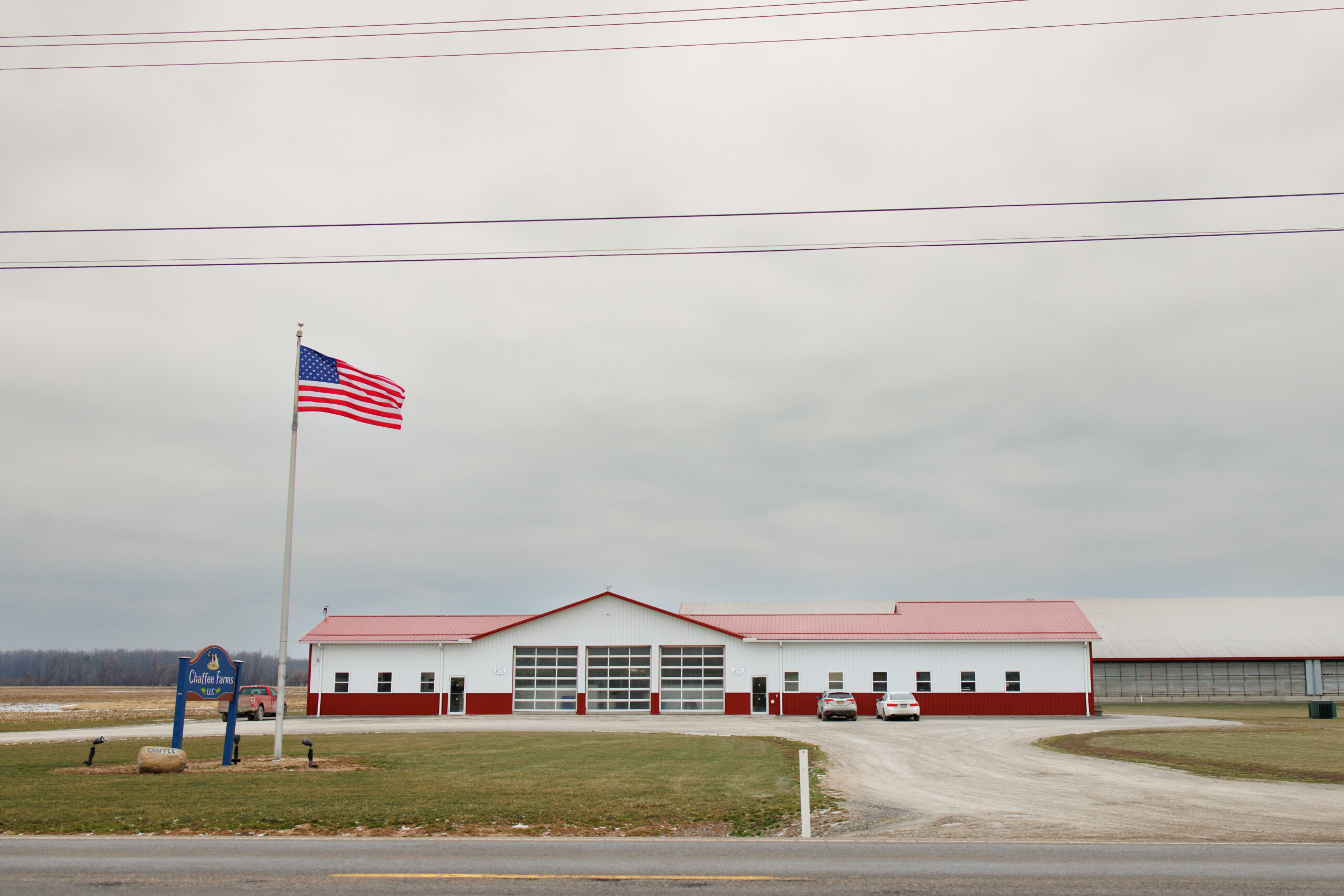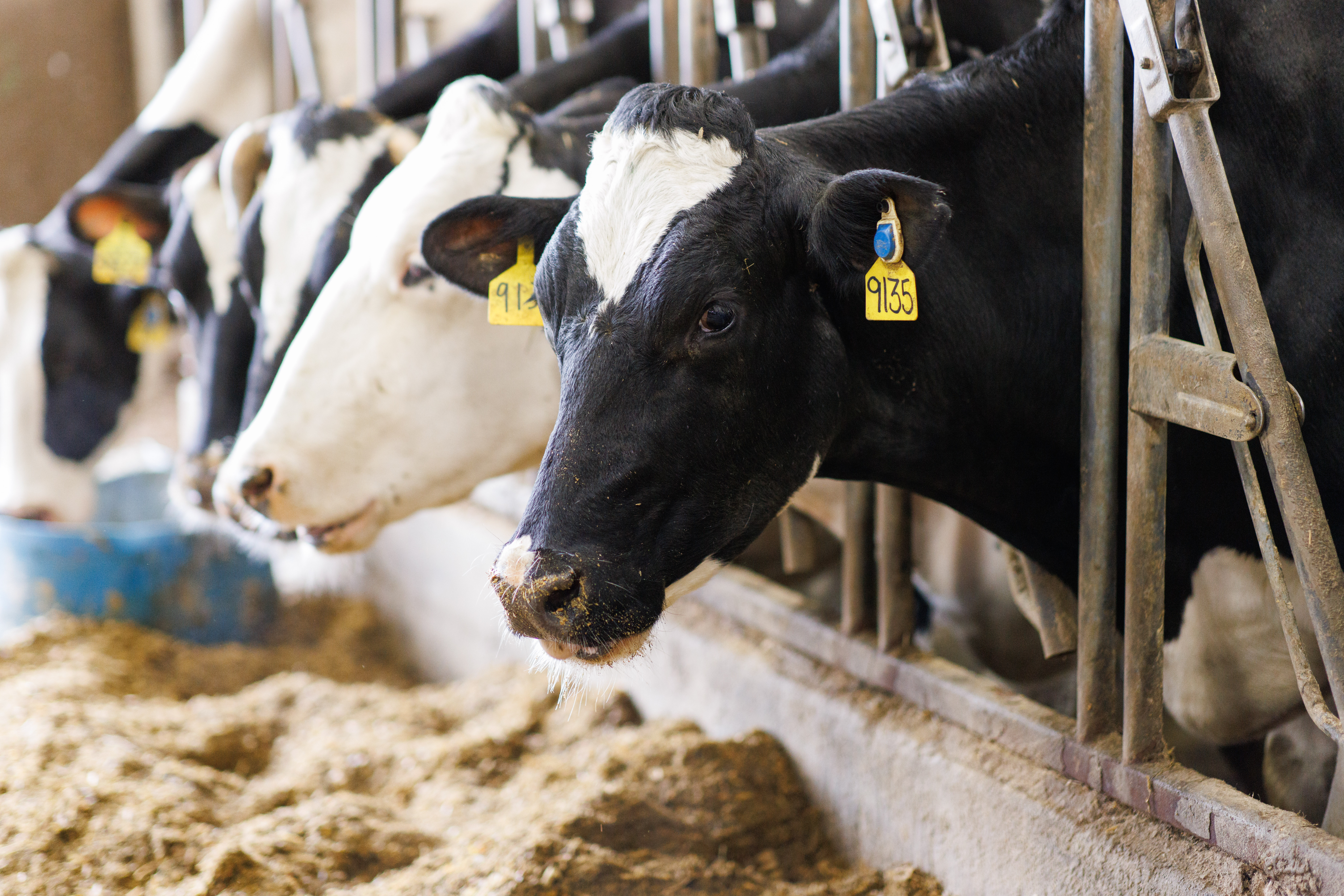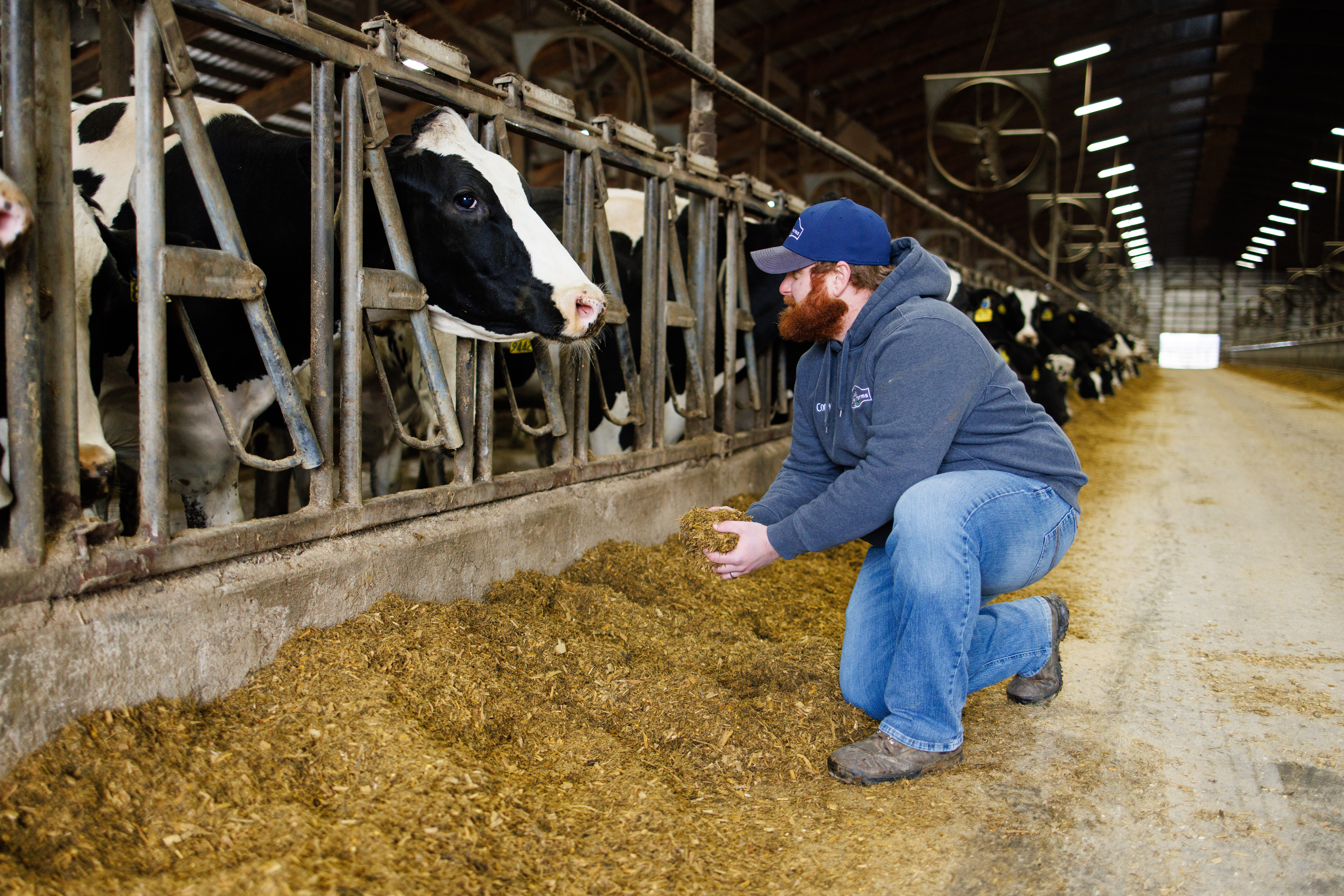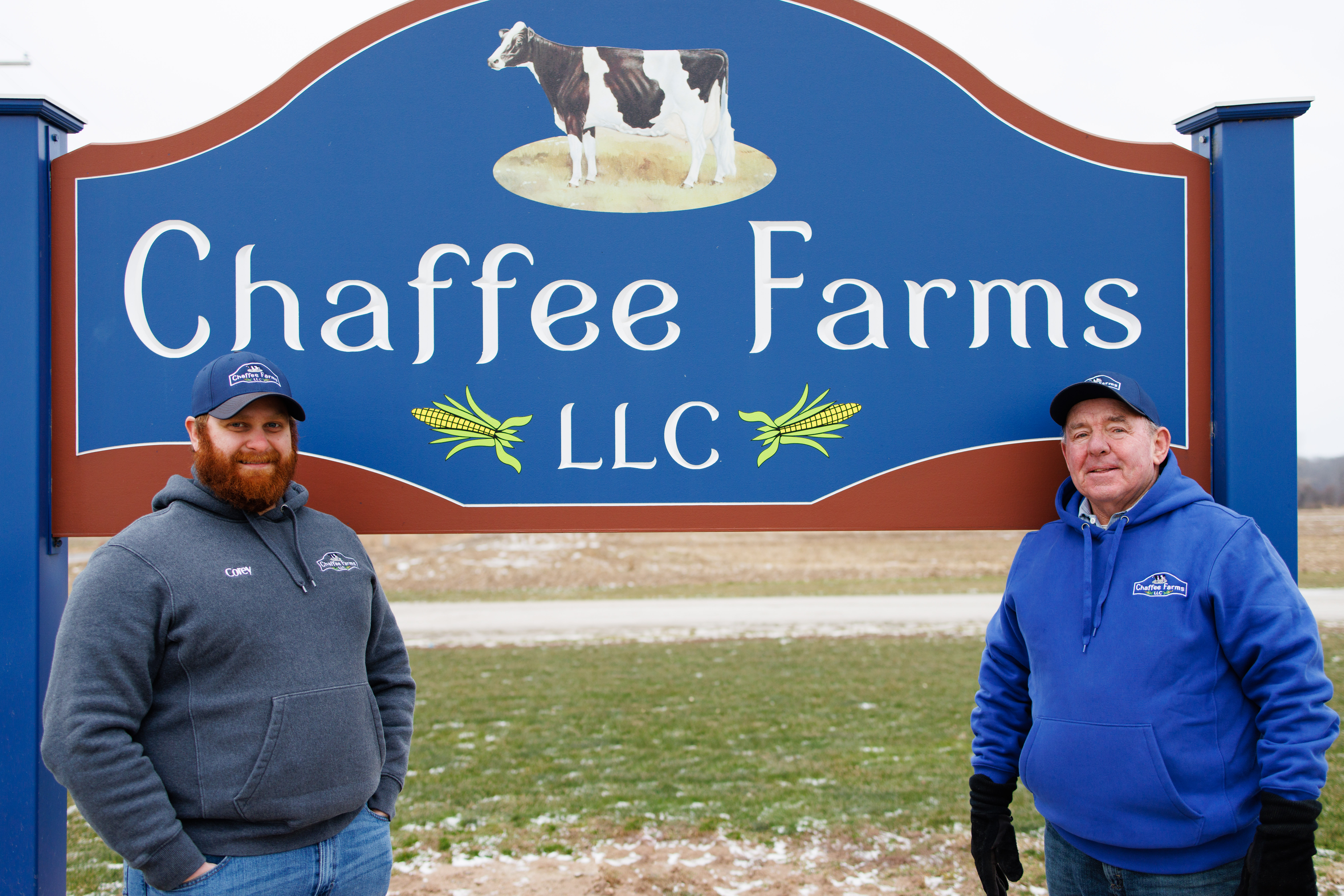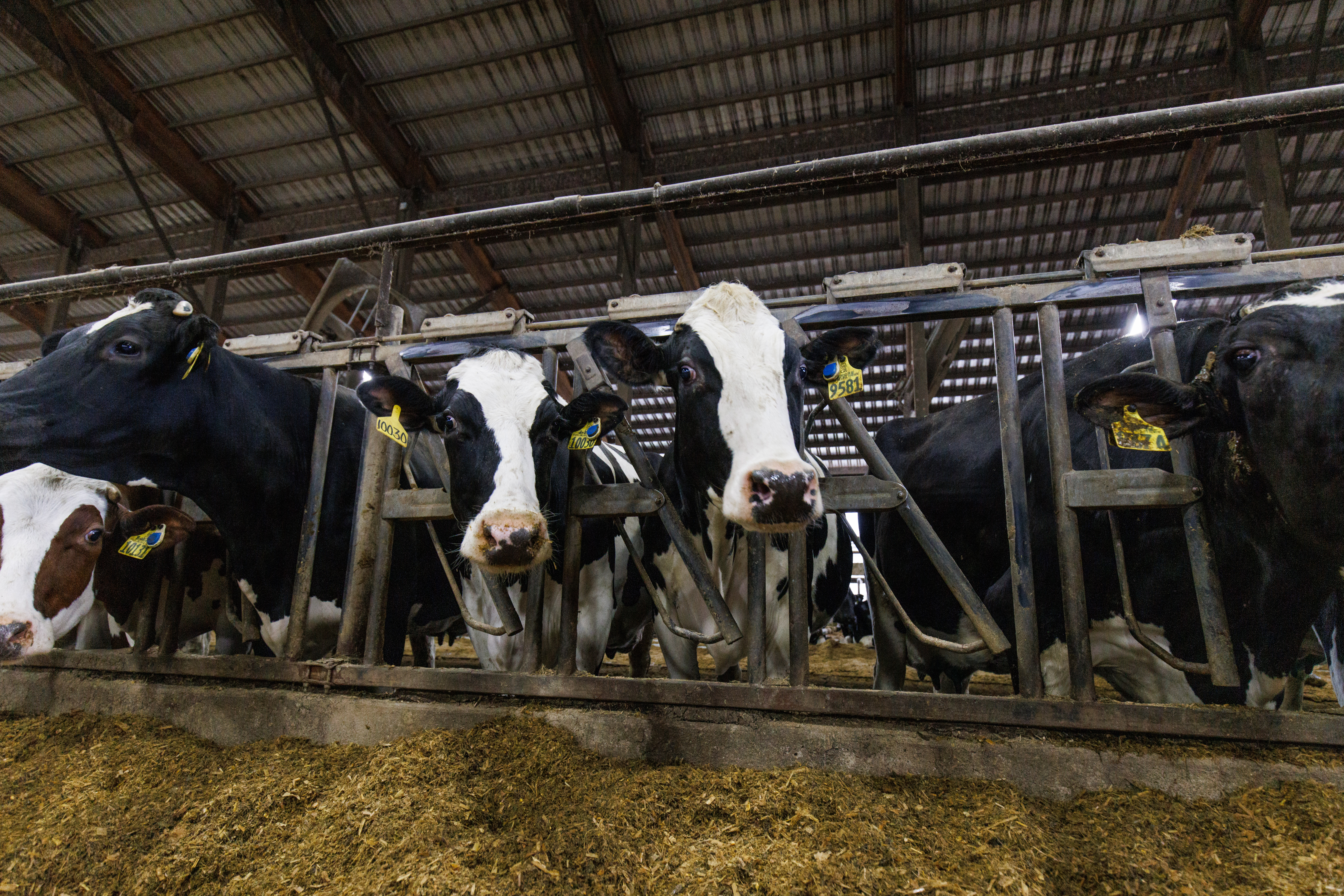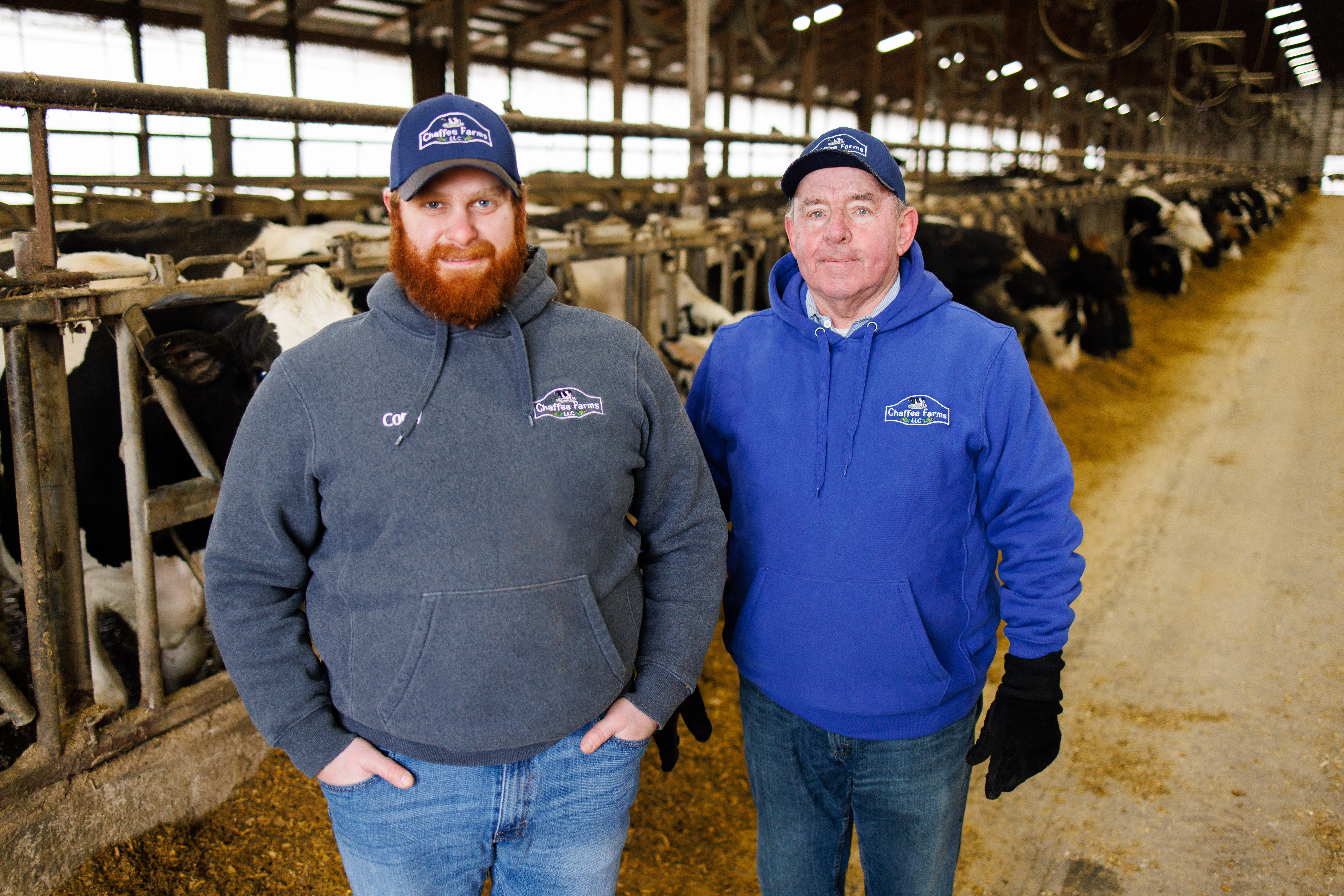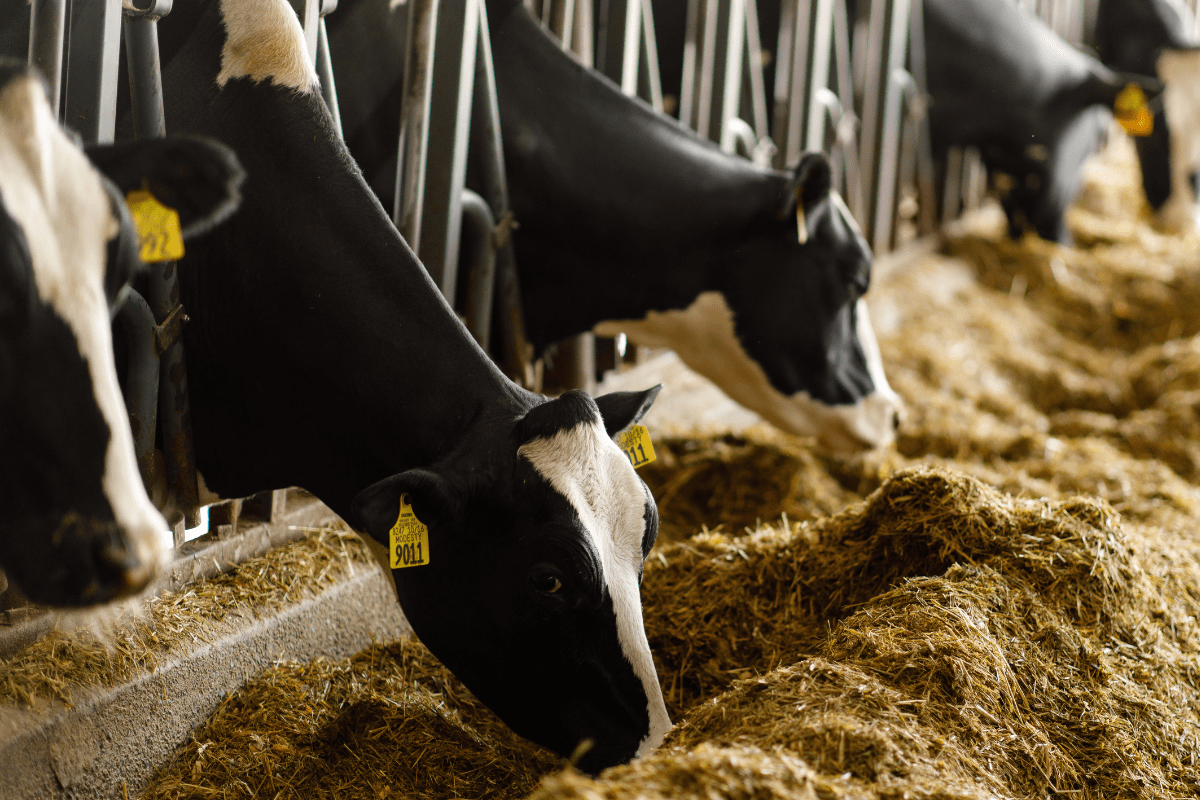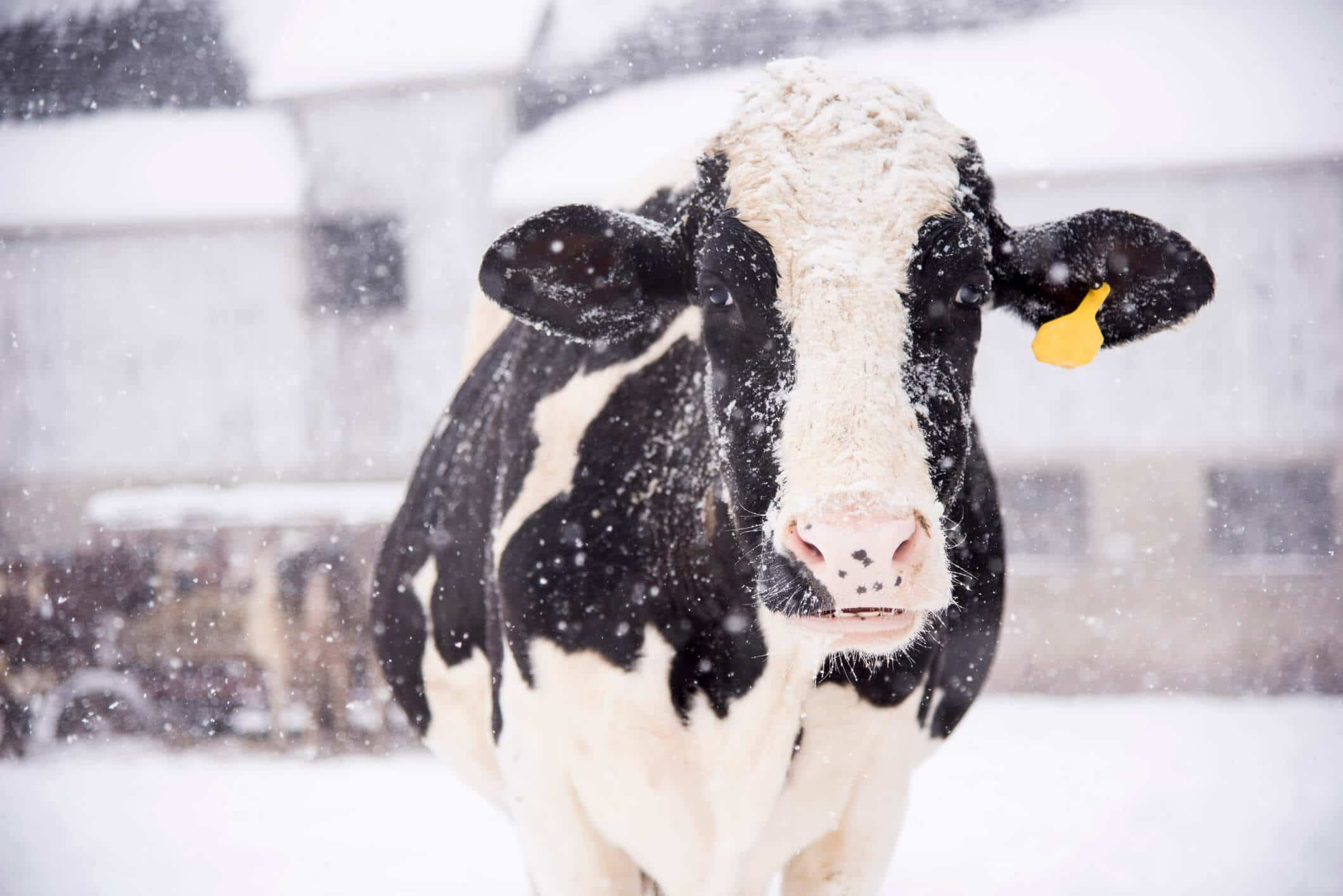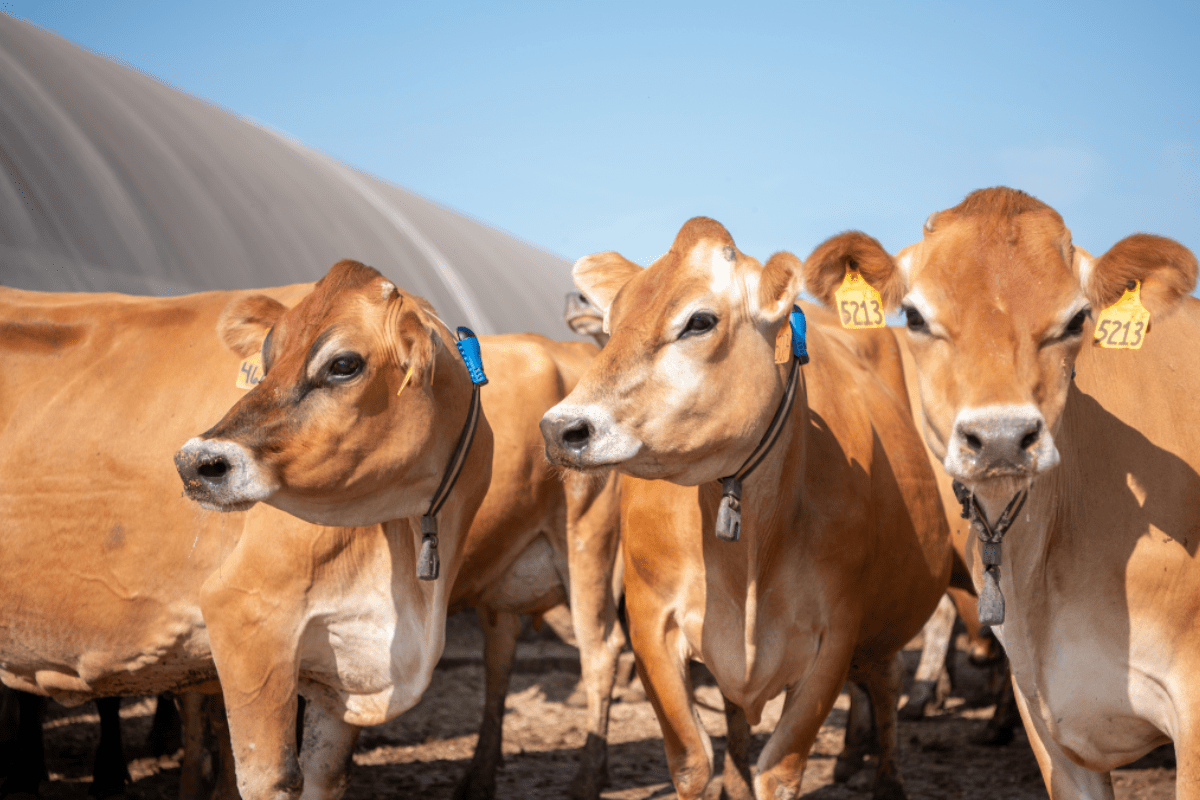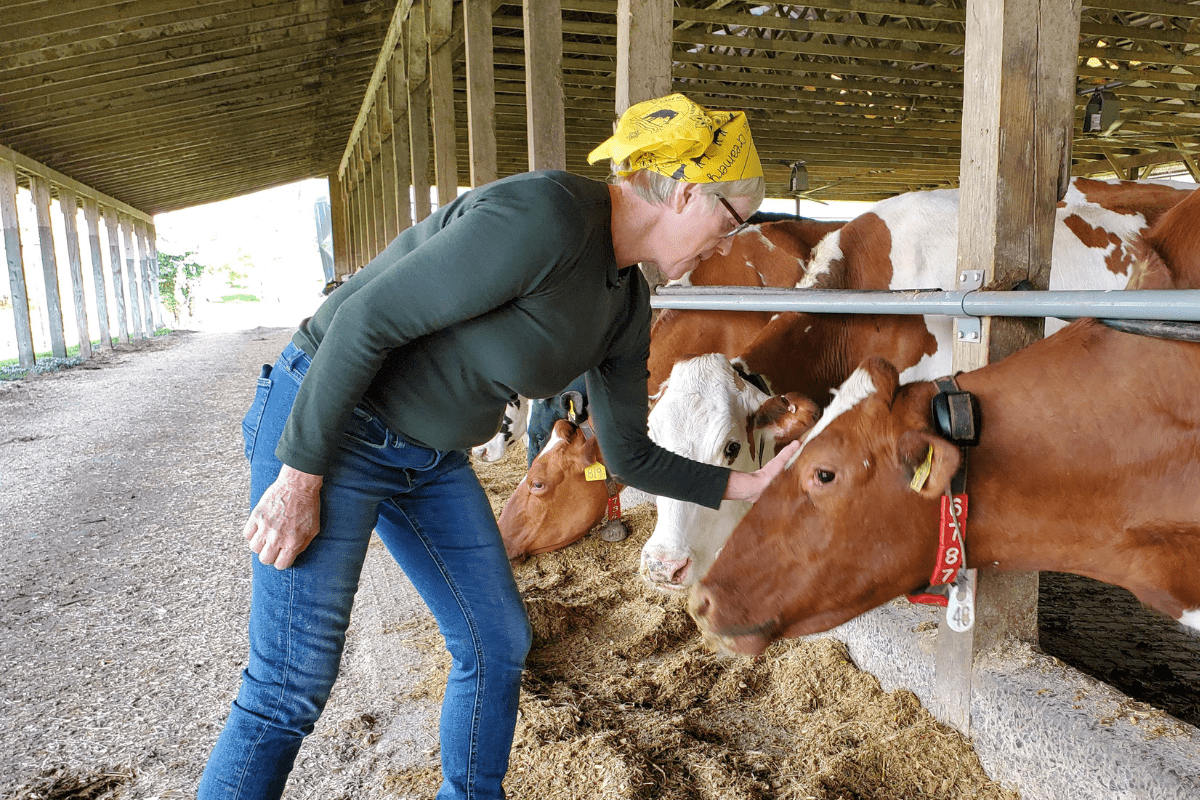Every morning, dairy farmer Corey Miller, a partner at Chaffee Farms, LLC, comes to the dairy in Barker, New York, and organizes the work that needs to be done for the day and checks on the herd. “No two days are alike!” Miller thinks people would be amazed if they knew the complexity of what farmers must do. “On any given day I’m wearing a human resources hat, I’m wearing a financial advisor hat. I’m juggling between caring for cows, crops and people,” Miller says. The farm has about 1,250 milking cows, which get milked three times a day.
Miller and his wife both have dairy farming in their blood. “I love being able to see my wife and our three kids, ages 9, 6 and 3, on the farm. That’s how I grew up, that’s how she grew up,” Miller says. His wife, a former nurse, now heads up the calf and heifer department, taking care of the animals just born and those who haven’t had their first calf yet. Getting calves off to a good start has a big impact on their future growth and health. “When we’re all at the farm and working toward a certain goal, there’s not much better in the world than that.”
One of the most interesting and unique things about dairy farming, Miller finds, is that no two farms do things the same way. “At the end of the day, we’re all making milk,” Miller says, “It’s just everybody does it their own way.”
At Chaffee Farms, the focus is on keeping cows comfortable in all types of climates. “We’re close to Lake Ontario. We don’t get a lot of snow, but the wind never stops blowing,” Miller says. The farm is right on the border of Niagara and Orleans counties and last winter, Miller says, the farm experienced white-out conditions because of the wind.
All the barns at Chaffee Farms have curtains on them. Whether it’s raining, snowing or the winds are blowing badly, they can close the curtains or open them up to let in fresh air. “When the temperature is comfortable for us, the cows are hot,” Miller says. That’s why Miller says the fans in the barn are set to come on at around 65-degrees. At around 75-degrees, the misters turn on and spray the cows’ backs with water.
A recently built new barn at Chaffee Farms is specially programmed to run off the weather station. The technology automatically adjusts barn curtains and fans, for example. “It’s all connected – you can place a weathervane or systems on top of the barn, which tell you the wind speed and provides real-time information automatically,” Miller says.
Corey Miller, a partner of Chaffee Farms for about five years, seen here with Dudley Chaffee.
The strong winds experienced on the farm affects more than the animals. It’s also the reason why Chaffee Farms plants cover crops, planted to cover the soil and prevent soil erosion. “These are helpful because after a crop is harvested, the land otherwise sits bare during fall, and into winter and spring, and the winds can just blow away the topsoil.”
Healthy soil is important for growing the crops needed to feed the farm’s herd, Miller says. “We keep the cows’ diet relatively simple. We mostly feed them forages – corn silage that we harvest here on the farm. We also grind some of the corn for feed, and some canola meal, soybean meal and alfalfa.” And Miller says that’s why springtime is so critical for the farm. “We have a limited window to prep the soil and get everything planted so we can grow high quality feed for our cows. It affects everything else that will happen this year.”
Running a farm takes a lot of planning and organization. “When my wife was still working as a nurse, she’d talk about dairy farming sometimes and people were interested to learn that it’s actually a business. And agriculture is big business in New York State and people don’t always understand how complex it is. You can go to any farm, and you can always learn something,” Miller says.
What people most often are surprised to learn from the Millers is that the milk produced on Chaffee Farms can be purchased at the local grocery store within 48 hours after having left the farm. “It helps make that connection that our farm is about 15 miles from our closest Tops supermarket and we’re one of the families that supply that milk,” Miller says.

